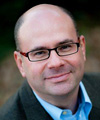 |
| Evan Welsh |
Social media might be the shiniest new tool in a communications arsenal, but for many PR professionals their work is still judged on the basis of their comprehensive media relations efforts. Evan Welsh, director of global media relations for business management software provider SAP, suggests measuring factors you can influence, such as volume and message penetration, to provide a clear picture of what’s working and what can be improved in your media relations efforts. Welsh will elaborate on measuring reach, share of voice and more at PR News’ PR Measurement Conference on April 18 in Washington, D.C.
PR News: What are the key trends you're seeing right now in media relations?
Evan Welsh: Most of what we’re seeing is in the area of digital and social media. A major consequence of the increase of social media has been the decrease of traditional media. As a result, there is a need for media relations professionals to generate and post more content, whether it’s on our company sites or as blogs, tweets, bylined articles, etc. We are moving beyond being a source of news to becoming a news channel.
PR News: What are your key media metrics, and how do you link your media relations outcomes to business goals?
Welsh: Metrics provide insight and intelligence into our strengths and weaknesses, i.e., what decision makers need to know. As such, metrics provide the basis for setting objectives and measuring performance. We focus on outcome-based metrics. For the past five or six years we have been measuring volume, share of voice and favorability. These are all important. However, more recently we introduced message penetration and quote penetration. We have a greater degree of influence and control over these metrics.
PR News: How is SAP using digital PR/social media for media outreach?
Welsh: As with most other companies, we are increasingly incorporating digital and social media into our media relations program. While social media has moved beyond being merely a trend, it is important to strike a balance between social and traditional media relations. And, it is also very important to remember that regardless of whether we’re using digital, social or traditional media relations, the same basic communications principles apply.
PR News: What’s one key tip you’ll share with attendees at the PR Measurement Conference?
Welsh: We need to focus on measurement objectives that we, as media relations professionals, can influence. We shouldn’t only focus on the raw volume of articles, which can be largely influenced by factors beyond our control. One crisis can completely skew our quarterly numbers. As such, we are spending more time and effort on metrics that we can better control, including message penetration.
Attend PR News’ PR Measurement Conference on April 18 in Washington D.C. and learn more from measurement experts like Evan Welsh.
Follow Regina D’Alesio: @reginadalesio
